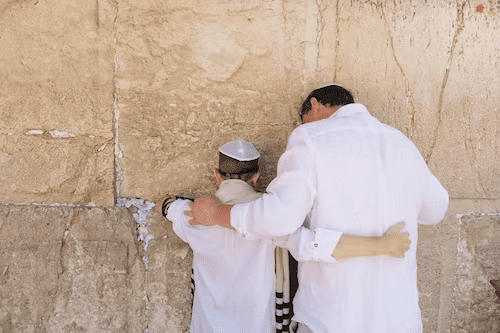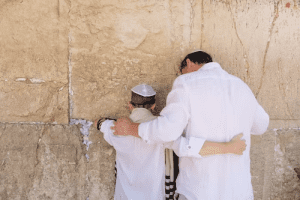The practice of praying at the Western Wall has a rich and deeply rooted history that spans over two millennia. It is a testament to the spiritual pull of the Wall, which has resulted in millions of people who have made the journey over the years to have their prayers heard by its side.
The origins of the Western Wall as a place of prayer can be traced back to the construction of the Second Temple in the 6th century BC. The Second Temple, which stood as the center of Jewish religious life and worship, was completed around 516 BC. It served as a replacement for the First Temple, which had been destroyed by the Babylonians about 70 years earlier.
Centuries later, King Herod, a Jewish king serving under the Roman Empire, renovated the Temple and expanded the platform underneath, which required the construction of four retaining walls, one of which is the Western Wall. It is the only remaining structure of the Temple complex.
The practice of praying at the Western Wall in the manner we know today began to take shape after the destruction of the Second Temple by the Roman Empire in 70 AD. The Second Temple’s destruction was a devastating event in Jewish history and it marked the beginning of the modern Jewish diaspora- the dispersion of Jewish communities across the world.
Jews who were unable to return to Jerusalem and the ruins of the Temple still yearned for a connection to their spiritual heritage. After the Romans and the Byzantines were expelled from Jerusalem by a Muslim conquest, Jews began making the pilgrimage to the Wall to make prayers and light candles by its stones.
Over time, the Western Wall emerged as a location for profound divine connection. It became a place where Jews could come to mourn their loss, lament their exile, and pray for the restoration of Jerusalem and the rebuilding of the Temple. This is the origin of the term “Wailing Wall,” which reflects the deep sorrow and longing expressed by Jewish worshipers.
Despite these challenges, Jews and pilgrims of other religions have continued to visit the Western Wall, and its reputation as a place for prayer has only grown.
Over many centuries, the Western Wall has endured various regimes and eras, accompanied by many challenges. Despite all the turmoils, Jews and pilgrims of other religions have continued to visit the Wall, and its reputation as a place for prayer has continuously grown. Today, the Western Wall continues to be a place of profound spiritual significance for believers worldwide. It is a symbol of resilience, faith, and divine presence on Earth. Prayers, wishes, and notes are placed within the crevices of the wall, a tradition that represents the heartfelt hopes and dreams of those who visit this sacred site.

